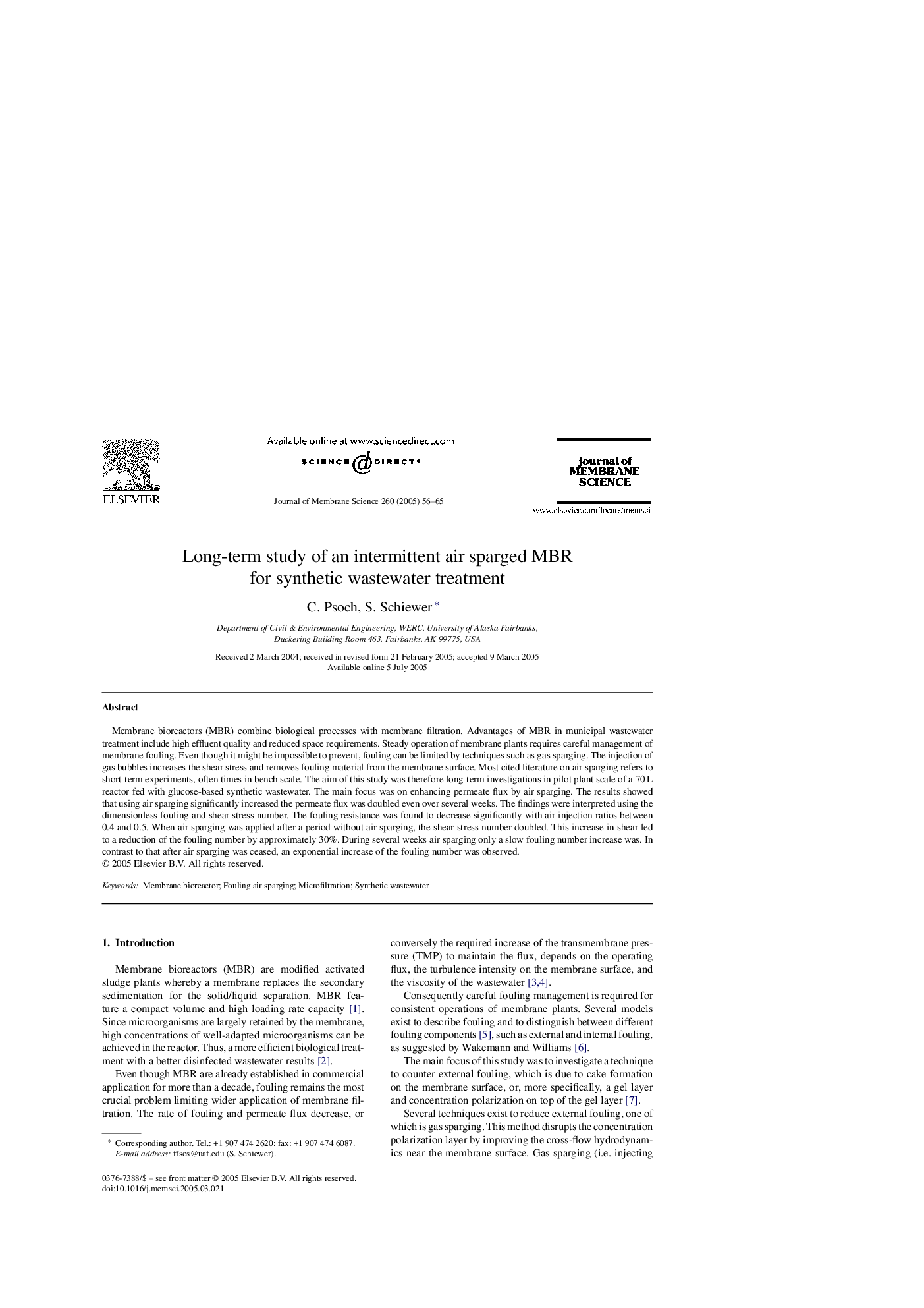| Article ID | Journal | Published Year | Pages | File Type |
|---|---|---|---|---|
| 9684715 | Journal of Membrane Science | 2005 | 10 Pages |
Abstract
Membrane bioreactors (MBR) combine biological processes with membrane filtration. Advantages of MBR in municipal wastewater treatment include high effluent quality and reduced space requirements. Steady operation of membrane plants requires careful management of membrane fouling. Even though it might be impossible to prevent, fouling can be limited by techniques such as gas sparging. The injection of gas bubbles increases the shear stress and removes fouling material from the membrane surface. Most cited literature on air sparging refers to short-term experiments, often times in bench scale. The aim of this study was therefore long-term investigations in pilot plant scale of a 70Â L reactor fed with glucose-based synthetic wastewater. The main focus was on enhancing permeate flux by air sparging. The results showed that using air sparging significantly increased the permeate flux was doubled even over several weeks. The findings were interpreted using the dimensionless fouling and shear stress number. The fouling resistance was found to decrease significantly with air injection ratios between 0.4 and 0.5. When air sparging was applied after a period without air sparging, the shear stress number doubled. This increase in shear led to a reduction of the fouling number by approximately 30%. During several weeks air sparging only a slow fouling number increase was. In contrast to that after air sparging was ceased, an exponential increase of the fouling number was observed.
Related Topics
Physical Sciences and Engineering
Chemical Engineering
Filtration and Separation
Authors
C. Psoch, S. Schiewer,
